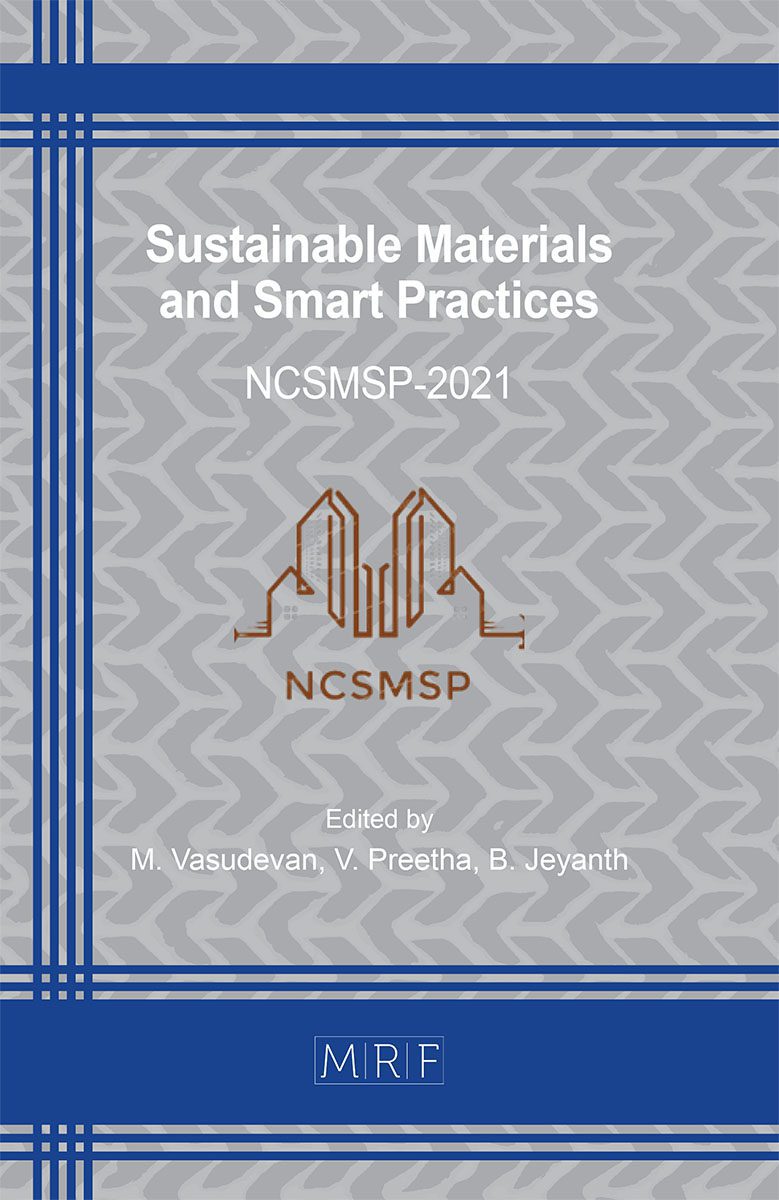A Review on Recent Experimental Research on Soil Stabilization
S. Durgadevi, A. Dinesh, S. Saran, G. Selvakumar
download PDFAbstract. The increasing population results in executing the infrastructure and buildings to be constructed also in weak and soft soil. Therefore, the soil must be strengthened to surrender larger settlements, ground subsidence, etc to resist the collapse of building. In such cases, the necessity of ground improvement has been implemented. The ground improvement techniques is majorly performed for reducing settlement in soft soil, improving the soil bearing capacity, slope stabilization and preventing from earthquake liquefaction. This technique is done for stabilizing the properties of soil and attempted to modify the existing ground. Ground improvement can be done by various techniques i.e., vibro-compaction, dynamic-compaction, ground freezing, Vibro-replacement stone columns, Electro kinetic stabilization, grouting, etc. Recent improvement techniques are introducing Geo cell, Geo-textiles and Geo-membranes has been developed in which the soil is reinforced with materials like aluminum, stainless steel, polyester, fibers, polyamides in the form of strips or grids to stabilize the soil. This paper will give some of the recent techniques adopted in site to improve the soil properties.
Keywords
Liquefaction, Slope Stabilization, Dynamic, Geo Cell
Published online , 10 pages
Copyright © 2022 by the author(s)
Published under license by Materials Research Forum LLC., Millersville PA, USA
Citation: S. Durgadevi, A. Dinesh, S. Saran, G. Selvakumar, A Review on Recent Experimental Research on Soil Stabilization, Materials Research Proceedings, Vol. 23, pp 311-320, 2022
DOI: https://doi.org/10.21741/9781644901953-36
The article was published as article 36 of the book Sustainable Materials and Smart Practices
![]() Content from this work may be used under the terms of the Creative Commons Attribution 3.0 licence. Any further distribution of this work must maintain attribution to the author(s) and the title of the work, journal citation and DOI.
Content from this work may be used under the terms of the Creative Commons Attribution 3.0 licence. Any further distribution of this work must maintain attribution to the author(s) and the title of the work, journal citation and DOI.
References
[1] B.S. Asha, B. Ram Rathan Lal, A. H. Padade, T. Mandal, J. N. Mandal (2012), “Emerging trends in ground improvement techniques”, Journal of Geotechnical and Geo-Environmental Engineering, Geo Congress, ASCE, pp-594-603. https://doi.org/10.1061/9780784412121.062
[2] Basu G (2019), “Bio Engineering of river earth embankment using natural fiber based composite structured geotextiles”, Geotextiles and Geo membranes, pp 266-1144.
[3] Brajesh Mishra (2016), “A study on ground improvement techniques and its applications”, International Journal of Innovative Research in Science, Engineering and Technology, 5, pp 72-86.
[4] A. Duggan, B.A. McCabe, J. Goggins, E. Clifford (2014), “Factors affecting embodied carbon and embodied energy associated with ground improvement techniques for construction on peat”, Journal of Cleaner Production, Volume 271, 122540. https://doi.org/10.1016/j.jclepro.2020.122540
[5] B. Indraratna, C. Rujikiatkamjorn, A.S. Balasubramaniam, G. McIntosh (2010), “Soft ground improvement via vertical drains and vacuum assisted preloading”, Geotextiles and Geomembranes, 30, pp 16-23. https://doi.org/10.1016/j.geotexmem.2011.01.004
[6] HarshalVerma, ArunavaRay, RajeshRai, TusharGupta, NeerajMehta, “Ground improvement using chemical methods: A review”, Heliyon Volume 7, Issue 7, July 2021, e07678 https://doi.org/10.1016/j.heliyon.2021.e07678
[7] Ling Zhang (2009), “Study on bearing capacity of geo cell reinforcements in embankments”, Geotextiles and Geomembranes, 28(5), pp 475-482. https://doi.org/10.1016/j.geotexmem.2009.12.011
[8] Mckelvey D (2002), Shear strength of recycled construction materials intended for use in vibro ground improvement”, Proceedings of the Institution of Civil Engineers- Ground Improvement, 6 (2), pp 59-68. https://doi.org/10.1680/grim.2002.6.2.59
[9] Mohammad Bilal, Abdullah Talib (2016), “A study on advances in Ground Improvement techniques and its applications”, National conference on Advances in Geotechnical Engineering, at Aligarh.
[10] Nimisha Kachra, Megha k Patel (2016), “Ground Improvement techniques” Global Research and development Journal for Engineering, pp 407-414.
[11] Patraa C R (2005), “Bearing capacity of embedded strip foundation on geo-grid reinforced sand”, Geotextiles and Geomembranes, 23(5), pp 454-462. https://doi.org/10.1016/j.geotexmem.2005.02.001
[12] Dr S K Tiwari, N K Kumawat (2014), “Recent development in Ground Improvement Techniques”, IJRDET, (2), pp 67-77.
[13] Zoltan V Solymar (1986), “Ground Improvement Techniques by compaction piling”, Journal of Geotechnical Engineering, 112(12), pp 1069-1083. https://doi.org/10.1061/(ASCE)0733-9410(1986)112:12(1069)
[































